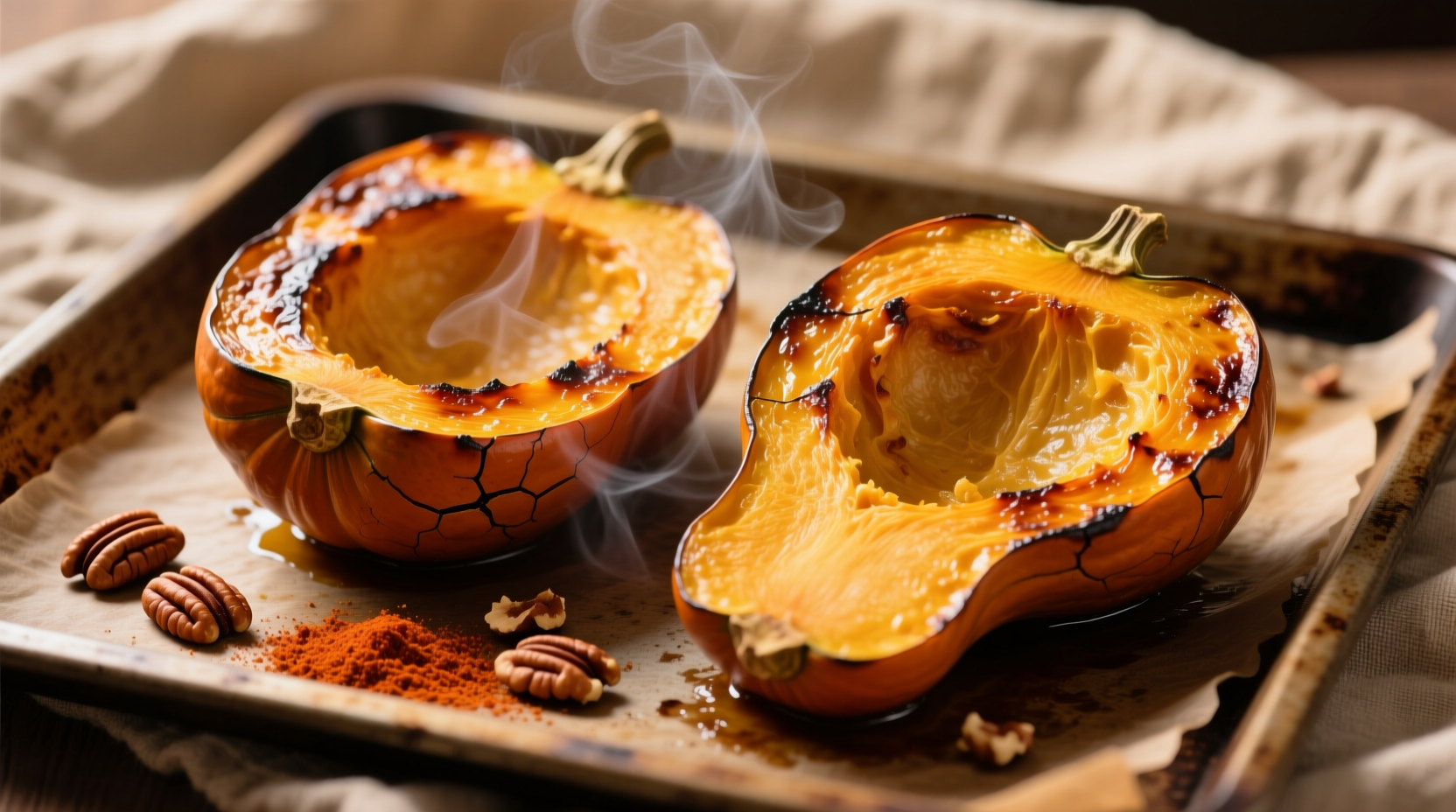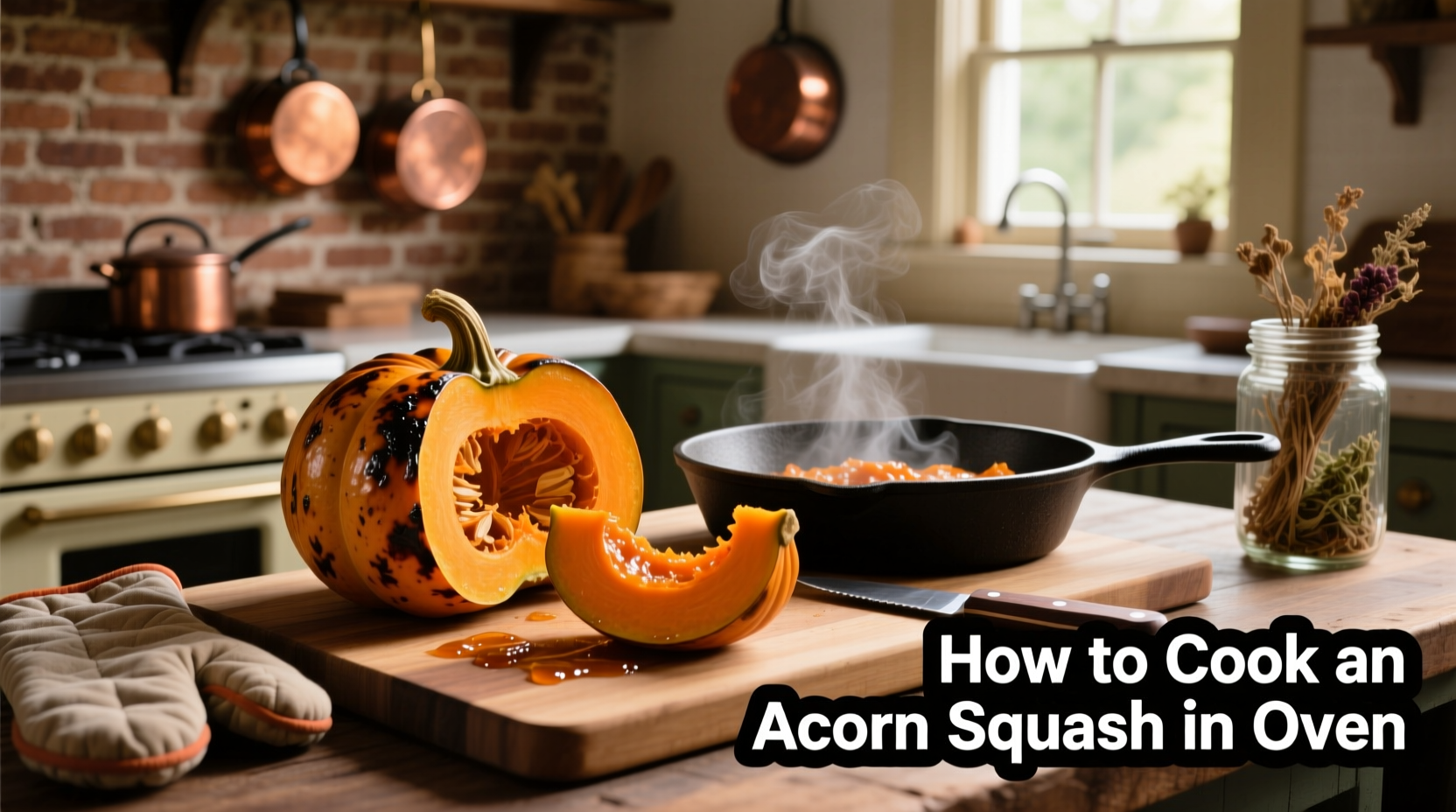The Foolproof Oven Method for Perfect Acorn Squash
Acorn squash transforms into a sweet, nutty delight when roasted properly in the oven. Unlike boiling or microwaving, oven roasting concentrates the squash's natural sugars while creating that perfect caramelized exterior. In my 15 years of culinary experience, I've found this method consistently delivers restaurant-quality results with minimal effort.
Why Oven Roasting Beats Other Methods
While you might be tempted to try quicker cooking methods, oven roasting provides distinct advantages:
- Enhanced natural sweetness through caramelization
- Perfect texture balance - tender but not mushy
- Hands-off cooking once prepared
- Creates a beautiful presentation for serving
- Allows for easy flavor customization
Your Essential Equipment Checklist
Before starting, gather these kitchen essentials:
- Sharp chef's knife (8-10 inches)
- Sturdy cutting board
- Metal spoon for seed removal
- Baking sheet or roasting pan
- Parchment paper (optional but recommended)
- Pastry brush for oil application
| Squash Size | Weight Range | Recommended Time | Internal Temp |
|---|---|---|---|
| Small | 1-1.5 lbs | 30-35 minutes | 190-200°F |
| Medium | 1.5-2 lbs | 35-40 minutes | 195-205°F |
| Large | 2-2.5 lbs | 40-45 minutes | 200-210°F |
Step-by-Step Preparation Guide
1. Selecting Your Squash
Choose squash with firm, dark green skin without soft spots or blemishes. The ideal specimen should feel heavy for its size with a hard, dry stem. Avoid squash with yellowing skin, which indicates overripeness. According to USDA agricultural guidelines, peak season for acorn squash runs from September through January, when you'll find the sweetest, most flavorful specimens.
2. Safe Cutting Technique
Acorn squash has a tough exterior that requires careful handling:
- Place squash vertically on cutting board
- Using a sharp chef's knife, carefully pierce through the stem end
- Rock knife gently while applying downward pressure
- Continue cutting through to the blossom end
- Use a metal spoon to scoop out seeds and stringy pulp
Safety Tip: Never try to cut squash horizontally first - this creates an unstable surface and increases injury risk. If you struggle with cutting, microwave whole squash for 2-3 minutes to soften slightly.
3. Flavor Enhancement Options
While basic salt and pepper works beautifully, consider these professional flavor combinations:
- Classic Sweet: Maple syrup, cinnamon, and a pinch of nutmeg
- Savory Herb: Olive oil, fresh thyme, and minced garlic
- Autumn Spice: Butter, brown sugar, and pumpkin pie spice
- Mediterranean: Olive oil, lemon zest, and rosemary
4. Perfect Roasting Process
Follow these precise steps for foolproof results:
- Preheat oven to 400°F (200°C) - accuracy matters for proper caramelization
- Line baking sheet with parchment paper for easy cleanup
- Place squash halves cut-side down on the baking sheet
- Roast for 35-45 minutes (refer to size chart above)
- Test for doneness by inserting a fork into the thickest part
- Flip squash cut-side up for final 5 minutes if adding toppings

Serving and Storage Guidance
Remove squash from oven when a fork slides in easily with no resistance. The flesh should be tender but still hold its shape. Let rest for 5 minutes before serving to allow flavors to settle.
Serving Suggestions:
- Fill cavity with cooked quinoa, wild rice, or stuffing
- Top with toasted pecans or walnuts for crunch
- Add a dollop of Greek yogurt or sour cream
- Pair with roasted chicken or turkey for a complete meal
Storage Timeline:
- Refrigerator: Store in airtight container for 3-4 days
- Freezer: Portion into freezer bags for up to 3 months
- Reheating: 350°F oven for 15-20 minutes or microwave for 2-3 minutes
Troubleshooting Common Issues
Problem: Squash is too watery after cooking
Solution: Always roast cut-side down initially. This allows excess moisture to evaporate rather than pool in the cavity.
Problem: Skin is difficult to remove after cooking
Solution: Let squash cool for 5-10 minutes before attempting to remove skin. The flesh contracts slightly as it cools, making separation easier.
Problem: Uneven cooking
Solution: Rotate baking sheet halfway through cooking time, especially if your oven has hot spots. Consider using an oven thermometer to verify accurate temperature.
Nutritional Benefits You'll Enjoy
According to USDA FoodData Central, one cup of cooked acorn squash provides:
- 82 calories
- 2g protein
- 22g carbohydrates
- 9g fiber (32% of daily value)
- 145% of daily vitamin A needs
- 30% of daily vitamin C requirements
- Excellent source of potassium and magnesium
This nutrient-dense vegetable supports eye health, immune function, and digestive wellness - making it a powerhouse addition to your regular menu.











 浙公网安备
33010002000092号
浙公网安备
33010002000092号 浙B2-20120091-4
浙B2-20120091-4